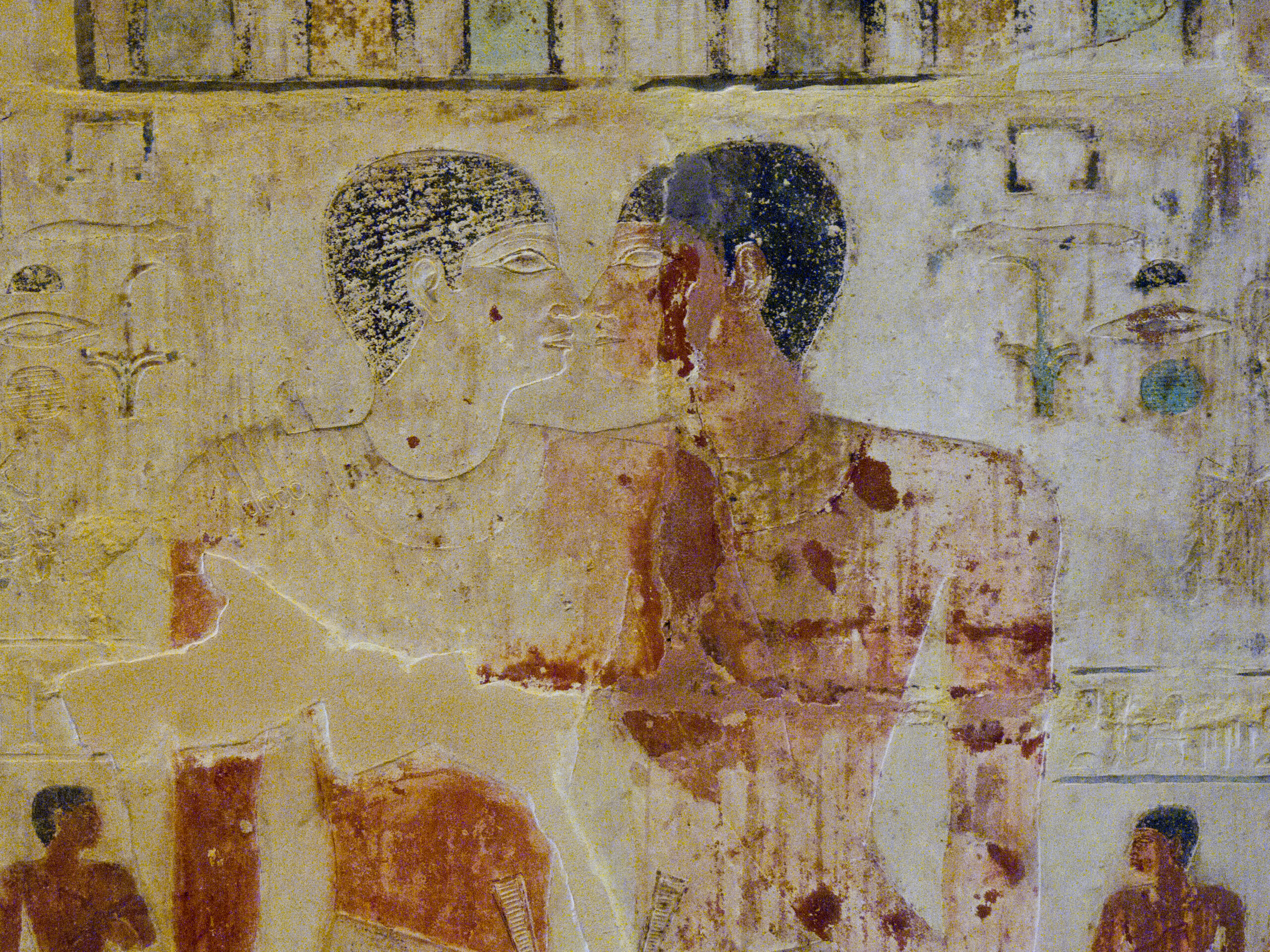He Made All Things Beautiful: Sexuality and Christian Lifestyle
She wasn’t quite sure how it happened—but it did. Monica1 was raised in a Seventh-day Adventist home, and living a Christian lifestyle came naturally to her.
Then she met Mark, a fellow student at an Adventist college. They spent time together, often alone, and one thing led to another until the two ended up in an intimate consensual sexual relationship.
Monica knew what the Bible taught regarding sexual intercourse outside of marriage. She often tried to silence her conscience by thinking, How can something that feels so good be so wrong?
Mark and Monica are not alone. According to the U.S.-based National Center for Health Statistics, in the United States 88.8 percent of women aged 15 to 44 years of age, and 89.9 percent of men aged 20 to 44 reported engaging in premarital sexual intercourse,2 with the average age of the first sexual experience at 17.3 years for women and 17.0 years for men.3 Of course, premarital sex is just one of several sexual sins prohibited within Scripture. Nonetheless, many wonder how something could be wrong if it feels right. What is the connection between sexuality and the Christian lifestyle?

Biblical Instruction
The Bible is filled with references to sex and sexuality and serves as a guide for healthy roles and relationships. The first five books of the Bible “regulate sexual activity and establish sexual roles. [Its] prophetic literature uses sexual metaphors in its announcement of God’s judgment on covenant unfaithfulness. Wisdom literature distinguishes wise sexual conduct from foolish and uses sexual imagery to characterize wisdom. The Gospels use the memory of Jesus’ words and deeds to shape the sexual conduct and dispositions of His followers. The Epistles deal with concrete questions of sexual conduct. Revelation contains sexual imagery and instruction.”4
With such an inspired reference at our fingertips, we do well to study its instruction, heed its warnings, and claim its divine blessings.
In the beginning God created human beings with distinct sexual identities: “Male and female He created them” (Gen. 1:27). Adam was created from the dust of the ground and Eve from Adam’s rib, revealing the closeness the two were to share.
“This is now bone of my bones and flesh of my flesh; she shall be called Woman, because she was taken out of Man,” exclaimed Adam.
“Therefore a man shall leave his father and mother and be joined to his wife, and they shall become one flesh. And they were both naked, the man and his wife, and were not ashamed.”
To be “one flesh” encompasses the blending of heart, mind, and soul of two distinct individuals. It includes physical, mental, emotional, and spiritual unity in line with the wholistic nature of who we are as human beings. Jesus affirms that marriage is to be an inseparable union of one man and one woman (Matt. 19:4-6). This union is meant to provide joy, pleasure, and physical completeness. And while the Bible speaks of the joys of marital intimacy, it also details the “wrong expressions of sexuality and their negative impact on people and society. It warns humans of destructive sexual behaviors such as fornication, adultery, homosexual intimacies, incest, and polygamy.”5 Because these behaviors subvert God’s beautiful purpose for human sexuality, we are warned not to engage in them (1 Thess. 4:3-5; Rom. 1:26, 27; 1 Cor. 6:9-11).

Biblical Instruction God-Given Identity
Sexuality is an integral part of our identity. It was fundamental “for personal identity and communal life in biblical times even as it is today.”6 The sense of who we are is foundational to how we relate to others and to the world around us. Scripture clearly reveals who we are and how we should live.
In the Garden of Eden, God gave His children two identity markers: (1) the Sabbath, reminding us He is our Creator and Lord; (2) our personhood, created male or female, in the image of God. These two identity markers will always be foundational for human identity.
In his article “Sexuality as Something Sacred,” David Thomas points out, “Since sexuality is part of the intrinsic zone in which we hold sacred things, if it is not properly reverenced and is treated tritely a person will feel diminished and infringed upon. The misuse of sexuality or the infringement upon it by someone else becomes both offensive and damaging, because the inner sanctum of life was trampled upon.”7
Lasting Effects
This happened to Mark and Monica. During their passionate romance, a rush of excitement and sensuous pleasure accompanied their illicit love affair. But they later experienced guilt, sorrow, fear, and remorse, and went their separate ways; carrying with them scars that affected their inner being, damaging their self-perception and relationship with others. Healing came only through repentance and return to God.
A classic biblical example of sexual infidelity is found in the story of David and Bathsheba, recorded in 2 Samuel 11. God had blessed David tremendously, and his kingdom had grown strong. But through the sins of lust and adultery, followed by murder, David plummeted into an abyss of sorrow from which he never fully recovered, even though he deeply repented and received God’s forgiveness (Ps. 51; 32).
Contrast David’s experience with Joseph, who, when confronted with an almost overwhelming temptation, cried out, “How then can I do this great wickedness, and sin against God?” (Gen. 39:9). Joseph’s integrity, clear conscience, and trust in God helped power him through dark days and into the light of exoneration, honor, and reconciliation.
Following God’s Plan
God never intended for us to experience the many negative outcomes resulting from illicit and unnatural sexual relationships. He warns that even impure thoughts are harmful (Matt. 5:28), as is pornography in all of its forms (cf. Ps. 101:3).
“Flee sexual immorality,” we are told. “Every sin that a man does is outside the body, but he who commits sexual immorality sins against his own body” (1 Cor. 6:18).
That’s why God, in His love and care for us, outlined how best to live, and why He gave clear instructions in caring for this most personal and private area of our lives. By following His plan, we become receptive to all the delights He longs to bestow. For those who are joined together in a one man-one woman monogamous marriage, this includes the joys of sexual intimacy. But whether single or married, we gain the satisfaction and security of knowing that we are created in His image, that He has a wonderful and fulfilling plan for our lives, and that He will satisfy our deepest desires.

—By Gina Wahlen, Editor and Project Manager, Presidential, General Conference of Seventh-day Adventists
This article first published in Adventist World, October 28, 2020. Used with permission.
1. Names have been changed. ↩︎- 2.National Survey of Family Growth, National Center for Health Statistics, www.cdc.gov/nchs/nsfg/key_statistics/p.htm ↩︎
- 3. Ibid.; https://bedbible.com/what-percentage-of-men-are-sexually-active-statistics/. ↩︎
- 4. Barry L. Bandstra and Allen D. Verhey, “Sex, Sexuality,” International Standard Bible Encyclopedia, ed. Geoffrey W. Bromiley, rev. ed. (Grand Rapids: Eerdmans, 1988), vol. 4, p. 429. ↩︎
- 5. “Guidelines for the Seventh-day Adventist Church in Responding to Changing Cultural Attitudes Regarding Homosexual and Other Alternative Sexual Practices,” voted April 17, 2014, https://tinyurl.com/https-www-adventist-org-arti. ↩︎
- 6. Bandstra and Verhey. ↩︎
- 7. David E. Thomas, “Sexuality as Something Sacred,” Adventist Review, June 20, 2013, p. 26. ↩︎
Images: AI-generated
Related Articles





